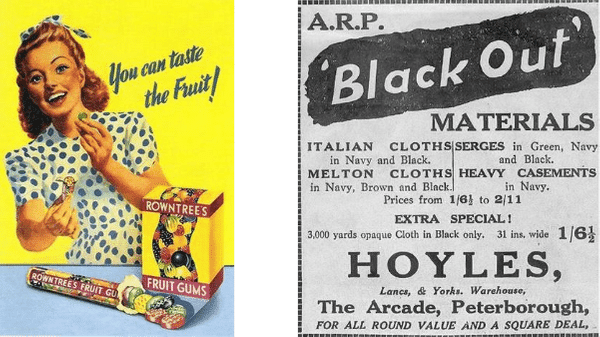With an ever-changing digital landscape, and specialist emerging left, right and centre promoting a host of services in the digital space, it can sometimes be tricky to understand exactly where to focus your marketing efforts, and unfortunately, over time print media has been seen as a waste of time, money and effort, and frankly- dead in the water.
Stats show that print campaigns receive 37% higher engagement from consumers against digital marketing, and although tracking these campaigns can be difficult, when done right they really do work.
Print marketing trends, typography and trust
Typically the majority of print marketing is direct mail or advertising.A survey conducted by Kantar Media found that 79% of people said they still read print newspapers, and 82% read printed and people found that ads in printed magazines are more enjoyable than online – 32% vs 26%. So although you can’t always track campaigns with fancy analytical software, don’t let this put you off allocating budget for this activity.
Over the years print marketing has changed significantly, however, some of the basic elements remain the same. You’ll always see companies advertising in the local business directory and flyers tucked under your windscreen wiper, but companies have also become a lot more creative with their campaigns and utilizing visual elements more than ever.

Gone are the days of hand-set lettering and huge, expensive, slow printing presses. Instead, we welcome super-fast, affordable litho and digital printing with the ability to add actual gold or even make designs interactive, meaning the sky really is the limit when thinking about engaging with your audience in this way.
With now over half a million fonts available on What Is Font alone and many other sources that are offering free fonts, companies can easily differentiate themselves from their competition and really create a style that reflects their brand, mission and is easily identified by their audience, no matter where they see it. Think about when you venture into the supermarket, you know what loaf of bread you’ve going to buy even if they move it in the store, solely because of the packaging it is in, and it’s a brand you know, enjoy and trust.
So taking this into account having a strong print presence is pivotal in a successful campaign. A well thought out campaign can be even more impactful than a digital one, and statistics from DMA even found 56% of people believe printed marketing is the most trustworthy form of communication– and we all want our customers to trust us, right?
Here are some print marketing tips:
You’ll find lots of guides and print marketing tips on the internet for what you need to produce the “perfect print marketing campaign”, but this doesn’t mean that those are be all and end off of the rules of designing something in this area.
Let’s look at this from a different perspective- what do you think makes this considered “bad”? Is it because you look at it and think it’s garish and the fonts and colours aren’t from complimentary palettes? Is it the huge in-your-face header and uninformative text underneath? Is it that the logo takes up a huge portion of the flyer?
Because that may be the case, but if it’s working for that particular business and they’re getting leads or increased sales, surely that’s considered a successful campaign, is it not?
Audience
Now direct mail campaigns can be expensive. By the time you’ve priced up design, print, mail house fees and internal resource you can easily look at it and are easily put off, but don’t be. Before you do anything, make sure you really nail down your target audience. Rather than sending a blanket campaign to every man and his dog, could you do a smaller batch to key prospective clients? Is there a particular publication that your audience all read or engage with and you could do a strategic partnership with them instead?
Messaging
Whether you’re sending out an A5 flyer or doing a huge billboard advertisement- your messaging is absolutely key. You want to clear title, association to your brand, an image (or two) that is relevant to your product/service and a clear, easy to do, memorable call to action. You don’t want a super long webpage link on a billboard, people won’t even have time to read it, let alone remember it.
Styling
Make sure that everything you do is in the same style. Different colours can be used to differentiate different products/categories but overall, the style must be consistent. How do you expect customers to find you in a world with 100 different products like yours if you’re always changing your image?
Don’t do too much at once
Yes, it’s great to have your message out there but how will you be able to measure success if you’re got the same thing everywhere? Don’t be afraid to pop other activity on hold temporarily whilst your advert is running, make sure you take note of the number of measurements before, during and after your campaign to establish ROI and achievement.
Ultimately, it will be your decision if you decide to branch into or continue activity in this space, however just remember it’s not a bad thing to be different. In a world where we’re being sold to left, right and centre across every digital device possible a lot of things become a blur. Print marketing is different. It’s tangible, it’s clear, and it can be super creative, and very easily end up paying for itself.
More must-read stories from Enterprise League:
- 9 ways to help you make a solid business plan for a metal fabrication business.
- All the reasons why we should support local businesses and shop local.
- Getting more customers – every business owner’s biggest concern.
- A few tricks up your sleeve when dealing with clients who refuse to pay.
- Unique and creative guerrilla marketing ideas for small businesses.
Related Articles
Remote patient monitoring: The tools, methods, and advantages for healthcare providers
Let’s explore the advantages of remote patient monitoring for healthcare providers and learn more about the benefits that this innovative approach offers.
10 reasons HR is important to an organization
Let’s discuss ten crucial reasons why HR is vital to organization and how effective human resource management contributes to success and growth of a company.
Top 6 pest control startups you should keep an eye on (2024)
Pest control startups are developing green products and technologies to target and eliminate pests while protecting both human health and the environment.
Remote patient monitoring: The tools, methods, and advantages for healthcare providers
Let’s explore the advantages of remote patient monitoring for healthcare providers and learn more about the benefits that this innovative approach offers.
10 reasons HR is important to an organization
Let’s discuss ten crucial reasons why HR is vital to organization and how effective human resource management contributes to success and growth of a company.






